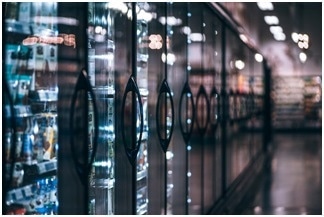Both ATEX and IECEx are critical safety certifications intended for process analyzers being fitted in adverse settings. Although a majority of people are aware that they should use products that are certified for safety, they do not always understand what the protection codes mean in the actual world, or the subtle differences between the certifying standards.
Process Insights offers the NIR-O full spectrum analyzer that has the highest protection rating of Zone 1, Group IIB+H2, T4. A protection rating like this is provided with both IECEX and ATEX certifications.
What is IECEx?
IECEx stands for International Electrotechnical Commission System for Certification to Standards Relating to Equipment for Use in Explosive Atmospheres (IECEx System).
What are the Benefits of IECEx?
A majority of the countries are known to operate under different standards. This implies that Ex equipment usually needs to be tested again and re-certified to the acceptable standards of that specific country, which will add to the equipment cost.
By contrast, the IECEx scheme considerably decreases the need for re-testing and certification procedures by harmonizing and conforming to IEC standards. As a result, international trade is made easier, faster, and more economical. Many national approval schemes use IEC standards. As such, IECEx certification can be utilized to support national compliance, thus averting the need for further testing in the majority of cases.
What is ATEX Certification?
ATEX—similar to the IECEx standard—is the European Union specific directive for protection against explosive atmospheres.
What are the Benefits to ATEX Certification?
ATEX certification allows Process Insights to produce and market spectroscopy-based inline analyzers for settings that are known or anticipated to contain combustible and explosive gases in the EU.
What is the Difference Between Class 1 Div 1 Zone 1 and Class 1 Div 2 Zone 2 Protection?
The assumption of risk is the main difference between Class 1 Div 1, Zone 1 and Class 1 Div 2, Zone 2 IECEX certification. For example, Zone 1 or Div 1 assumes that the environment is always filled with hazardous gases, and Zone 2 or Div 2 assumes that the environment may be filled with hazardous gases, but this scenario is unlikely.
Zone 1 or Div 1 protection rating is given to a process analyzer that has a clean air purge system to maintain the enclosure under positive pressure. Moreover, an interlock should trigger whenever there is a drop in pressure. This mechanism will shut off the analyzer and stop the system from exposing the combustible gases to an electrical ignition source. Furthermore, the electronics will not result until pressure is restored and for a certain amount of time. This is usually known as an X-purge.
A process analyzer would still need a clean air purge to achieve Div 2 Zone 2 protection rating. But only the airflow should maintain positive pressure. The analyzer should trigger an alarm if the pressure within the enclosure is lost, but the device may remain powered on to gather data. This is usually known as a Z-purge.
Understanding the ATEX Zone Rating—the Petrol Station Analogy

Class 1 Div 1 or Zone 1—When the underground storage tank is being refilled. When the vehicle arrives to refill the underground tank of the petrol station, gas vapors can be assumed to exist.

Class 1 Div 2 or Zone 2—The pump. If an automobile was filled recently, diesel or gasoline vapor is likely to be present.

General Purpose—Within the petrol station. This is regarded as a safe area where explosive gases are not present at all.
Explaining ATEX Group Markings
Groups define the dust and gas protections. A group III rating implies that the enclosure is only rated to safeguard against the infiltration of dust. A group II rating implies that the enclosure is protected against both gas and dust. Group IIA is the lowest gas protection rating, and group IIC is the best gas protection rating.
- Group IIA—protection is sufficient to avert the ignition of propane gas in the environment
- Group IIB—protection is sufficient to avert the ignition of ethylene gas in the environment
- Group IIB+H2—protection is sufficient to avert the ignition of hydrogen gas in the environment
- Group IIC—protection is sufficient to avert the ignition of acetylene gas in the environment
IECEX and ATEX group markings have corresponding Ingress or IP protection ratings. All Process Insights process analyzers come with IP 66 or NEMA 4 ratings enclosures as part of the protection design for explosive and hazardous settings.
What Does the T Marking Mean in IECEX?
The T stands for the highest external surface temperature that should not be surpassed by the analyzer. This part of the specification is to inhibit the surface of the analyzer enclosure from lighting the combustible molecules in the setting.
For instance, if ethyl nitrate comes into contact with a hot object or heat source over 90 °C, it will explode. Any analyzer that is going to be deployed to an environment comprising ethyl nitrate should be rated for T6 and must never cross a surface temperature over 85 °C. The T4 limit implies that the exterior of the analyzer will never be hotter than 135 °C. All analyzers from Process Insights carry a T4 rating, which makes these devices suitable to install in refinery and petrochemical facilities.
| T Rating |
Surface Temperature Limit |
| T1 |
450 ºC |
| T2 |
300 ºC |
| T3 |
200 ºC |
| T4 |
135 ºC |
| T5 |
100 ºC |
| T6 |
85 ºC |
Think Safety, Think Process Insights Process Analyzers
Users who require an IECEX- or ATEX-certified inline process analyzer, or have a question regarding the use of a spectrometer in an adverse setting, can contact a sales representative at Process Insights to discuss their requirements.

This information has been sourced, reviewed and adapted from materials provided by Process Insights – Optical Absorption Spectroscopy.
For more information on this source, please visit Process Insights – Optical Absorption Spectroscopy.